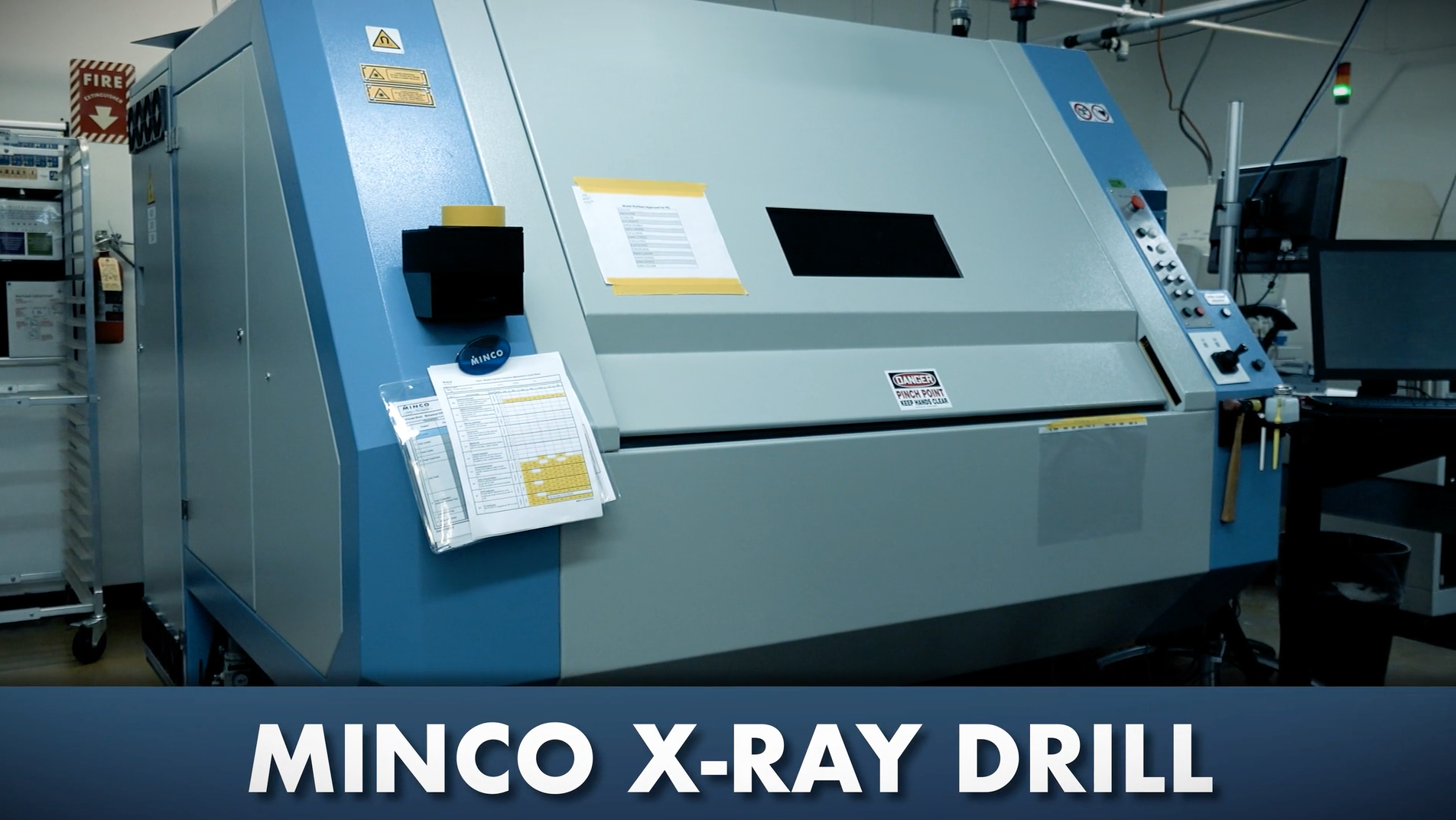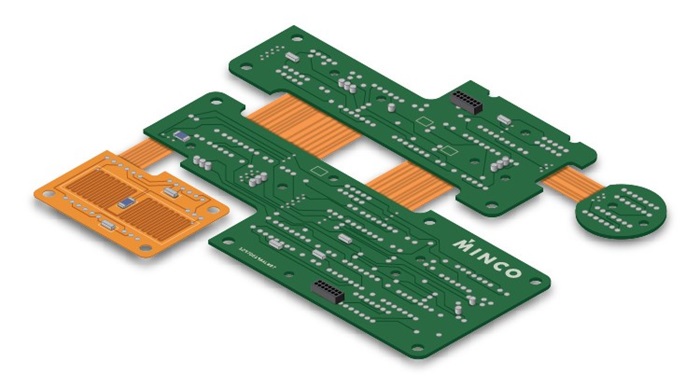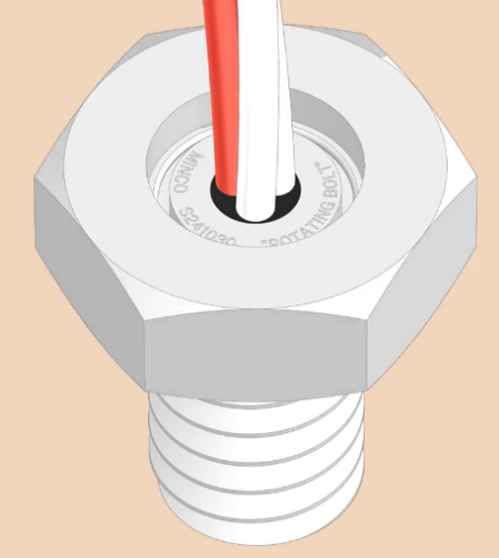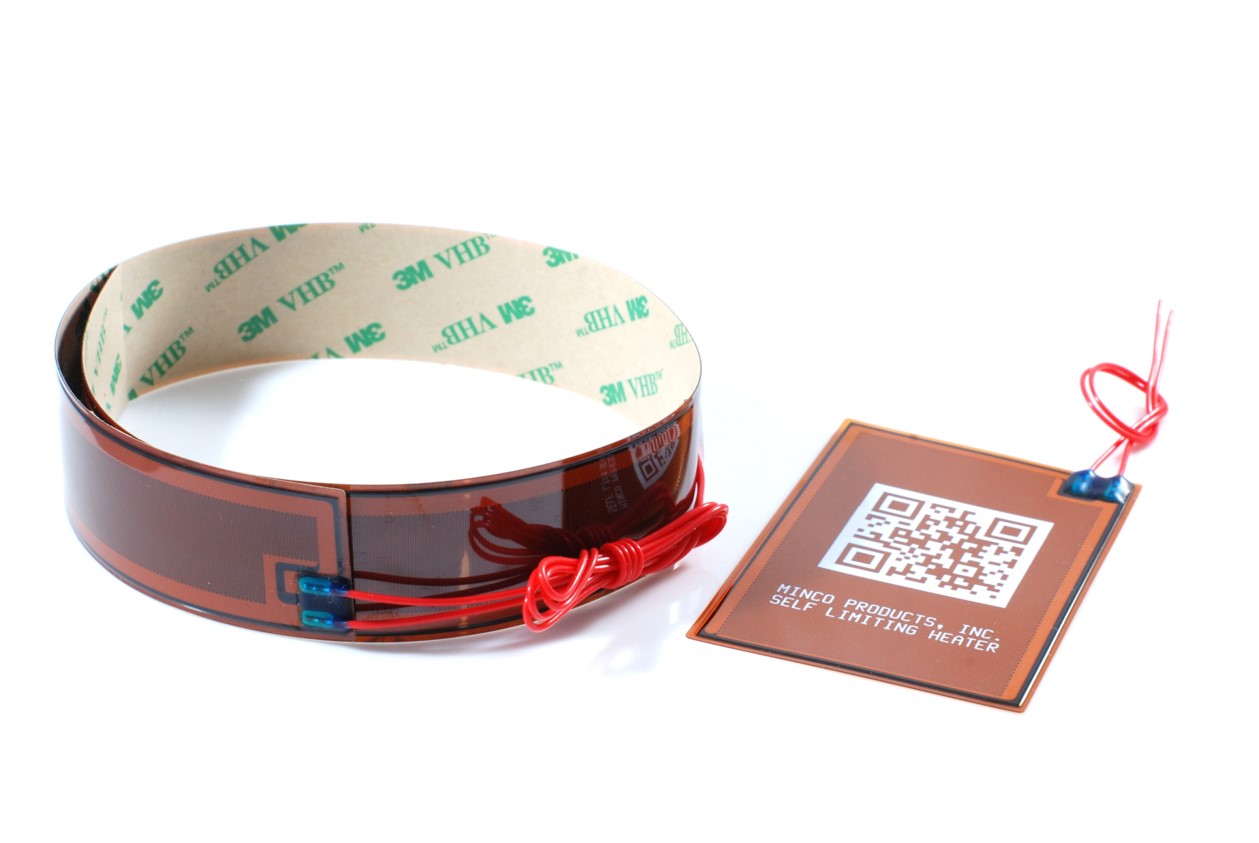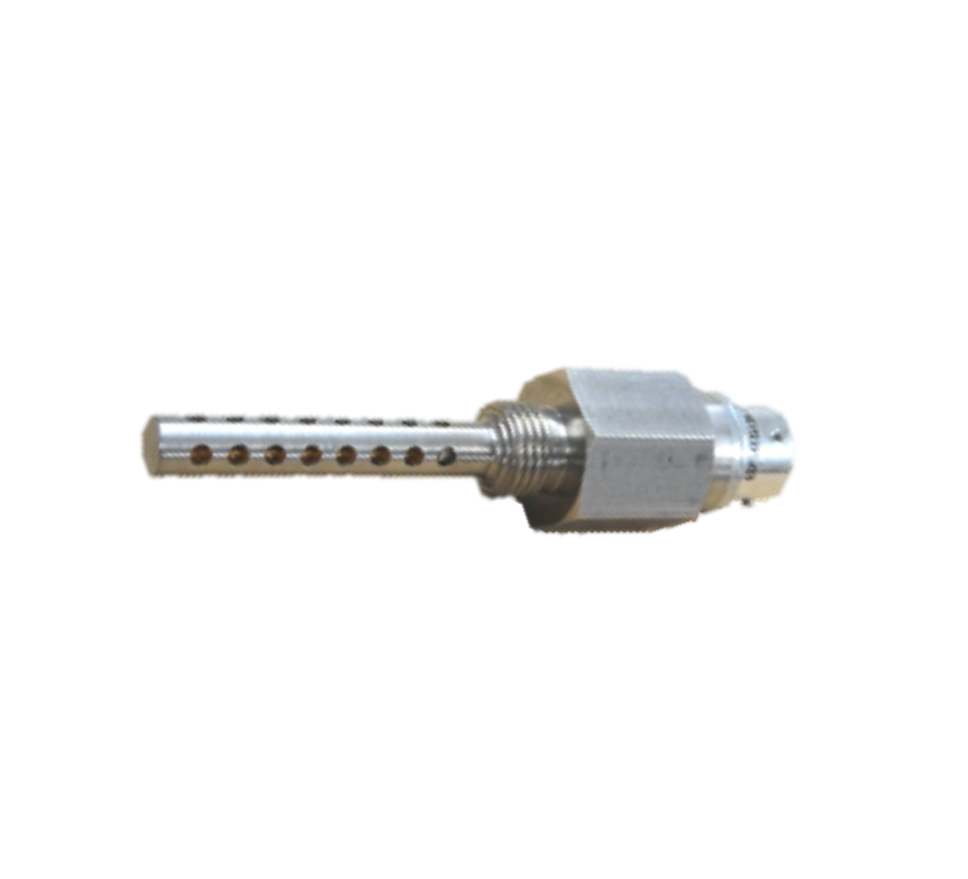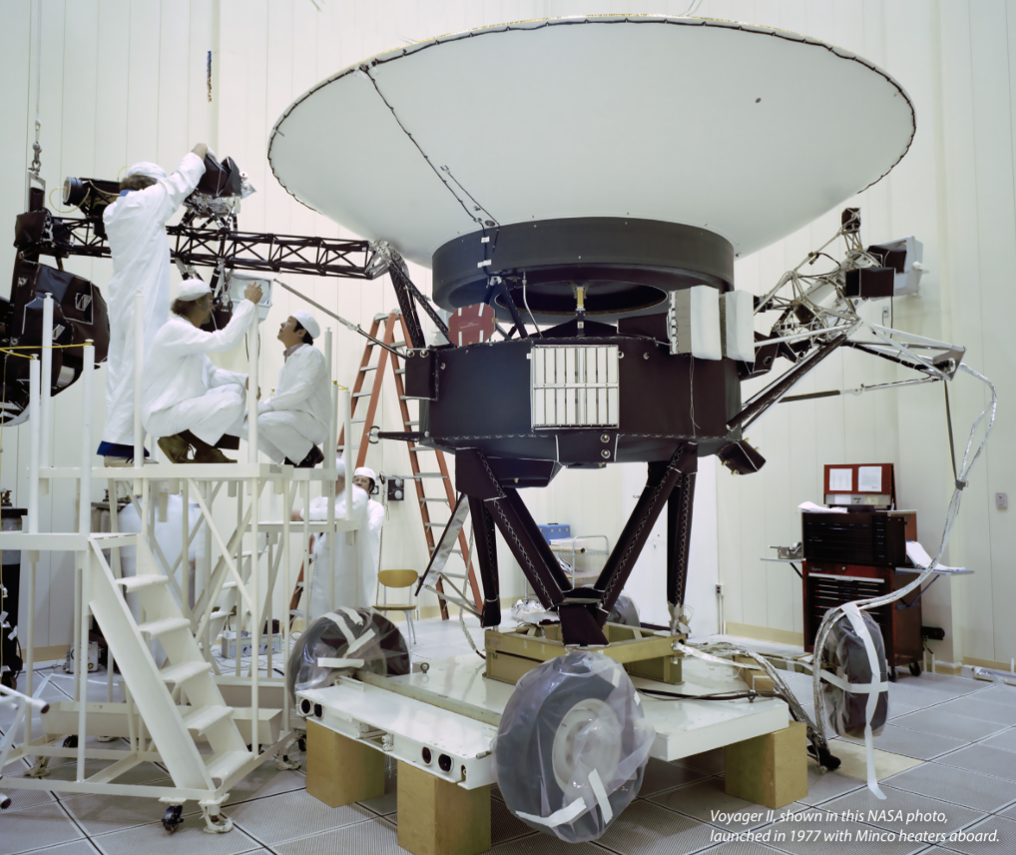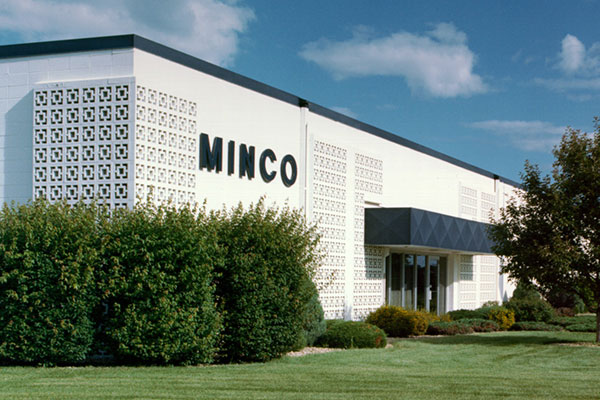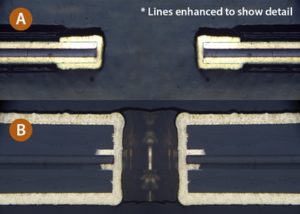 By Katya Kaslow
By Katya Kaslow
One of the primary decisions faced by our customers is whether to employ pads-only or panel plating when designing a flex circuit. You can see the two techniques in the image to theright: Figure A shows a 2-layer flex circuit with pads-only plating, whereas Figure B shows another circuit with panel plating.
Some disadvantages of panel plating include a decrease in flexibility due to the copper thickness being increased throughout the entire panel. Another disadvantage of this technique is found in the etch stage of the production process, where precise features can be more difficult to etch.
Differing from the panel-plating technique is pads-only plating, also known as button plating. Pads-only builds up the copper thickness of the pad and barrel while adding only a very thin layer of copper to the remainder of the panel.
There are many more advantages of the pads-only technique. By only adding the thicker electro-deposited copper to the pads, it makes for a much easier etch process. Another advantage includes a greater amount of flexibility since the copper doesn’t cover the bend areas. Base foils, which are typically rolled annealed copper, are more flexible than electro-deposited copper. In certain cases, the pads-only technique allows for less adhesive to be used when filling between the conductors. This also aids in increased flexibility.
The pads-only technique is the more expensive of the two options, thanks to the extra steps brought on during the production process—there are three more processes than panel plating, contributing to the increased pricing.
Both techniques offer advantages and disadvantages that can impact a project. If uncertain on which technique is best for your needs, contact Minco today or download our Flex Circuits Design Guide to learn more about our capabilities.

